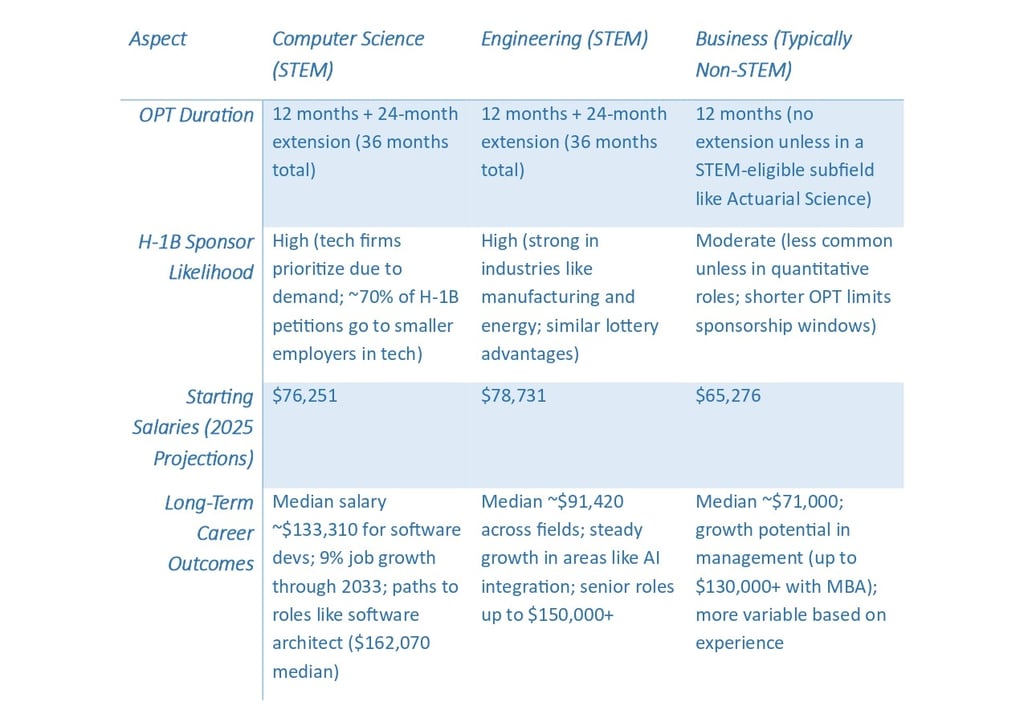For international students on an F-1 visa, your major directly influences post-graduation work opportunities and immigration pathways. Optional Practical Training (OPT) allows you to work in your field for up to 12 months after graduation. But if your major qualifies as STEM (Science, Technology, Engineering, or Mathematics), you can extend OPT by an additional 24 months, totaling 36 months.
This extension is crucial — it gives you more time to gain experience, build employer trust, and apply for H-1B visas multiple times, increasing your chances in the lottery system.
H-1B Lottery: Why Time Matters
The H-1B visa, a common next step for specialty occupations, is capped at 85,000 annually, with selection rates often between 25–44% in recent years. A longer OPT period means more lottery entries, and more chances to be selected while still legally working. Employers are also more likely to sponsor H-1B for candidates who are already proving their value during OPT — especially in high-demand fields like tech, engineering, and finance.
The Long Game: Green Card Advantages for STEM Majors
Looking further ahead, Green Card pathways (permanent residency) favor STEM graduates. Under employment-based categories like EB-2, STEM professionals with advanced degrees can qualify for National Interest Waivers (NIW), bypassing labor certification if their work benefits the U.S. economy or national interests.
Non-STEM majors typically face longer waits and stricter requirements, often relying on employer sponsorship through PERM processes. Data from USCIS shows that immigrant pathways for STEM employment provide more flexible options, including opportunities for exceptional ability recognition in fields like tech and engineering. For Nepali students, who often face country-specific backlogs in Green Card queues, a STEM major can accelerate this process by aligning with U.S. priorities in innovation and technology.
In short, your major isn't just about academics—it's a strategic choice for visa security and career longevity in the U.S.
Comparing Computer Science, Engineering, and Business Majors
To help you compare, let's break down these majors across key factors: OPT duration, H-1B sponsorship likelihood, starting salaries, and long-term career outcomes. We'll use a table for quick reference, followed by detailed explanations. Data is sourced from authoritative outlets like the U.S. Immigration and Customs Enforcement (ICE), National Foundation for American Policy (NFAP), and the Bureau of Labor Statistics (BLS).




